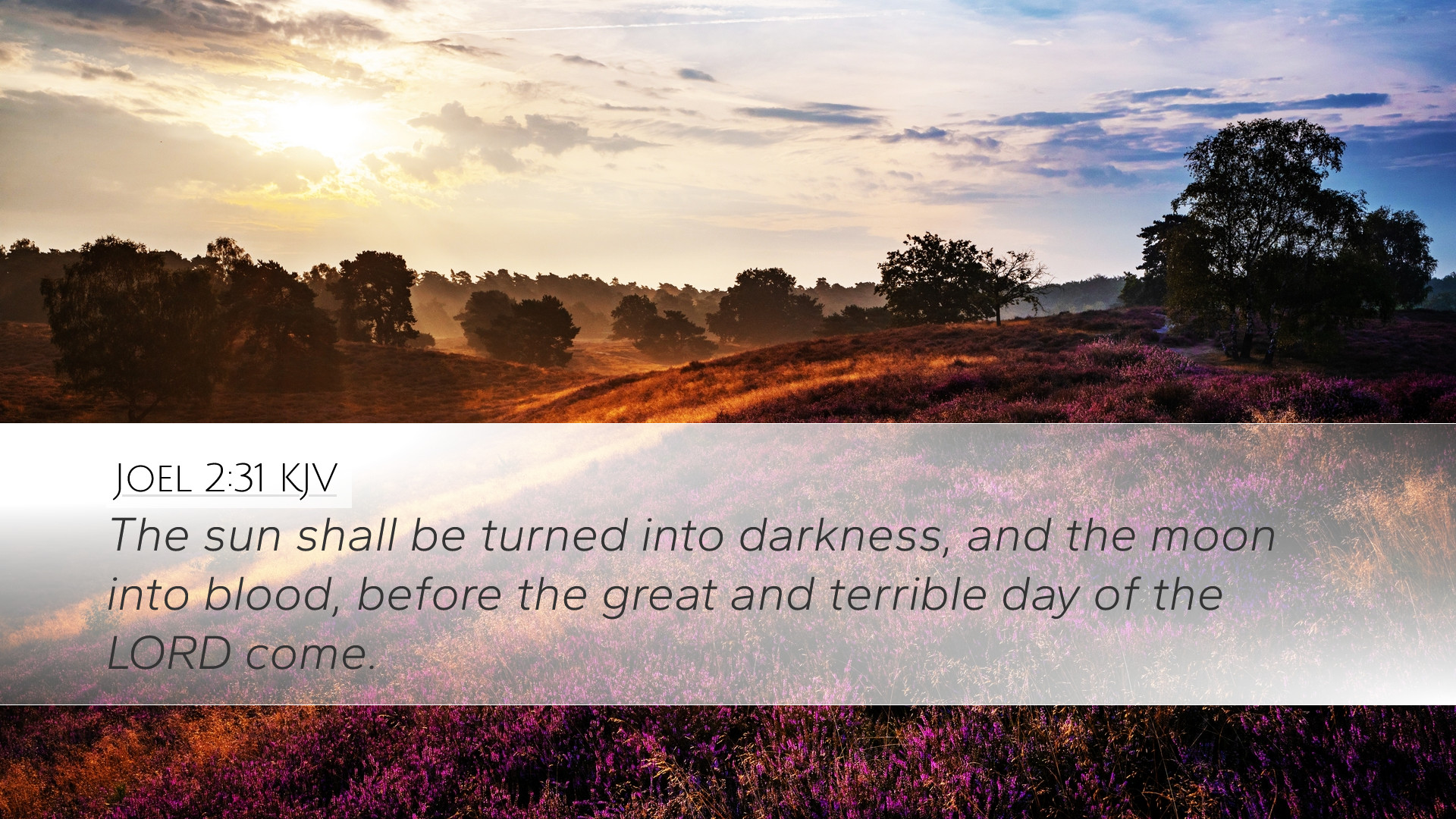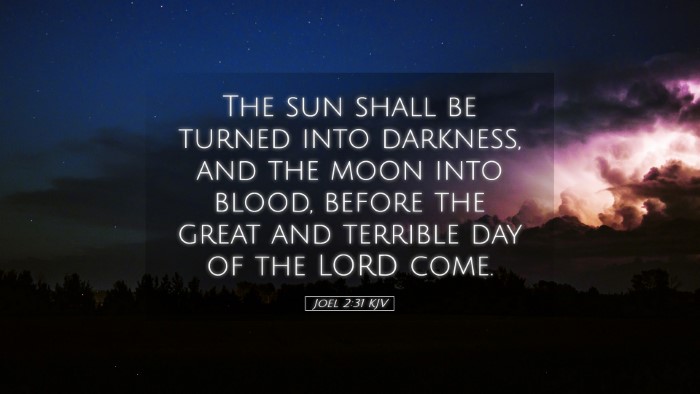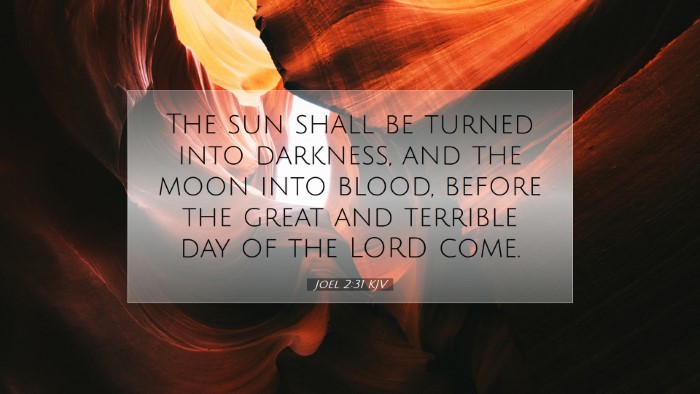Commentary on Joel 2:31
Joel 2:31 states: "The sun shall be turned into darkness, and the moon into blood, before the great and terrible day of the Lord come." This prophetic verse is rich in theological implications and imagery, evoking profound reflections on eschatology, divine judgment, and the manifestations of God's power.
Introduction
The context of this verse lies within Joel's prophecy regarding repentance and restoration. The preceding chapters outline God’s impending judgment and the necessity of returning to Him with all one's heart. Joel speaks of a day marked by cosmic signs, emphasizing the seriousness of God's intervention in human affairs.
Divine Judgment and Cosmic Signs
Matthew Henry comments on the dual nature of this passage, highlighting the literal and metaphorical meanings of the celestial phenomena described. He notes:
- The sun turned to darkness: This imagery signifies a disruption in the order of creation as a sign of divine displeasure. It represents the visibility of God's judgment.
- The moon turned into blood: Blood often symbolizes violence, death, or judgment. This transformation suggests severe calamity or the consequence of sin.
Henry emphasizes that these signs serve not only as warnings but also illustrate the overwhelming power of God in the face of human sinfulness.
Theological Implications
Albert Barnes provides a deeper theological reflection, suggesting that the signs in the heavens are indicative of significant transitions within God's plan for humanity. He points out:
- Inauguration of Judgment: The great day of the Lord signifies a time when God's justice is fully realized. The signs indicate an objection to the world’s sin and a precursor to ultimate judgment.
- Hope for Restoration: The cosmic disturbances also point toward a future restoration and renewal after the judgment, a recurring theme in biblical prophecy.
Barnes connects this to the prophetic tradition, reminding readers that such events are not arbitrary but are part of God’s redemptive plan.
Historical and Eschatological Context
Adam Clarke brings forth a historical context, noting that similar cosmic events have been recorded in various cultures as significant omens. His insights include:
- Historical Precedent: Clarke draws parallels to known historical events where calamities occurred alongside celestial phenomena, affirming that this verse resonates with the human experience of divine encounters.
- Eschatological Fulfillment: Clarke further elaborates on the eschatological interpretations of this verse, linking it to New Testament references, particularly in Acts 2:20 and Revelation 6:12, which describe analogous celestial signs during end times.
This significance enhances the urgency and seriousness of Joel’s message, placing it firmly within a prophetic tradition that extends beyond his immediate audience.
Call to Action: Repentance and Hope
Further contemplation of Joel 2:31 leads to the realization of the call for repentance amidst the message of doom. All three commentators stress the importance of returning to God. Matthew Henry encapsulates this with a compelling exhortation to turn from sin:
"Repentance is the pathway to restoration; the day of the Lord, though terrible, invites us to seek His mercy."
Barnes reinforces this by reminding the faithful that amidst the signs of judgment lies the hope of salvation for those who earnestly seek God. He states:
"The signs alert us not just to fear, but to act—to repent and draw near to the God who offers redemption."
Clarke concludes with a pastoral exhortation, addressing students and scholars alike:
"Approach these prophecies not as mere abstract academic exercises, but as living reminders of the urgency of our relationship with God in the face of voracious sin."
Conclusion
Joel 2:31 is replete with meaning that resonates with believers across generations. It speaks to the reality of divine judgment, the power of God’s creation, and the profound call to repentance and hope. As we navigate the complexities of this prophetic text, may we heed the warnings embedded within, allowing them to lead us to a deeper understanding of God's character—a blend of justice and mercy. Pastors, students, and scholars must approach these words with reverence and a keen awareness of their implications for faith and practice in today's world.


